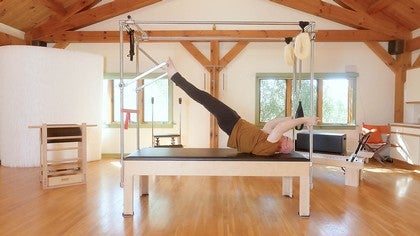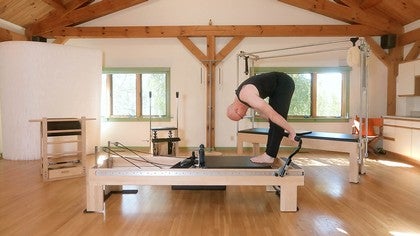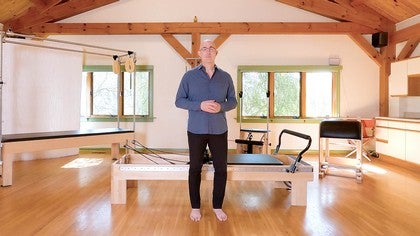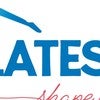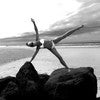Description
About This Video
Transcript
Read Full Transcript
So this section of the course is return to life. And we've gone through everything up to the six-month mark with the four phases of post-op therapeutic exercise and Pilates for our clients after surgery. And this is where I like to cover the section on returning to life and that should sound familiar to you as a Pilates enthusiast and teacher is that's what Jose said, Return to Life, it's the name of his book? And the idea is asking the client what do you believe you should be participating in now to be living life at its fullest? And I leave that as an open question because it's so different for every individual.
Some individuals believe that it's climbing Mount Kilimanjaro and others believe it's being able to sit down and play card games with their friends for two-three hours at a time. Once we understand what they wanna participate in then we must at this stage of the game, identify what are the physical demands that that activity is going to require of our client. And then we look at where are they deficient, this is why we use the Polestar Assessment Tool or the Polestar screening. You might use some other screening activities to be able to see where are they? Do they have enough endurance?
Do they have a deep enough squat? Do they have enough ankle dorsi flection? Are there any other co-morbidities that we need to be aware of at this time that might prevent them from doing that? If we had somebody who had congestive heart failure and they want to climb Mount Kilimanjaro, it's not the hip that's gonna stop them from climbing Mount Kilimanjaro, it's the heart disease. And so there might be a reality check of what people need to do.
They could have obesity, they could have a history of stroke or an auto-immune disorder or other types of impairments that could get in the way of what they choose to do. It also might be a reality check for them. What do they, if their body they understand what they think they wanna do but they realize how much work it will take for them to be able to do that. They might want to adjust the activity they're choosing and say, actually I like to be able to walk a 5K or I'd like to be able to go on a casual hike in the woods for an hour versus climbing Mount Kilimanjaro. So a lot of times we refer to this as the psychological alignment and we Pilates we talk about alignment all the time.
Here we're talking about the psychological alignment with their physical activity. I never liked taking dreams away from somebody because we never truly know what somebody's potential is. So we don't take that away. We just ask them and let them know, this is the amount of work that it's gonna take to get to that stage of activity and be able to successfully participate. I always like to tell the story here.
I had two 90-year-old clients both of them being referred to us for physical therapy. One of them had a shoulder impingement and the other had had a back fusion and a fracture in the left knee. The one that had the shoulder impingement was getting physical therapists from one of our therapists on staff. And she was complaining very loudly of how much pain she was in doing the Pilates and the therapeutic exercises that she was being given and I stopped the process and I asked her, what's wrong and what's going on? And she said, the therapy is killing me.
And I said, well, when does your shoulder bother you outside of physical therapy? She goes, the only time it bothers me was when I was getting my coffee cup off the second shelf, I told the doctor and he said that I should get physical therapy. So I said to her, well, have you ever thought about moving your cup from the second shelf to the first shelf? And she paused and she looked at me and she says, you're a genius. And I said, you're discharged, have a nice day.
The other over 90 patient was and is still an avid golfer. She loves to golf. She's had multiple back surgeries, she's had pacemakers, pain implant devices. In her mind, function and happiness revolve around her being able to play golf. So it was important for her to do her Pilates, her water therapy, her physical therapy to go to her coaching, change her clubs to graphite shafts to play a half swing game, to play nine holes instead of 18 holes so that she could continue to participate in the activity level that she wanted to participate in.
And I use this simple example because it always depends on what the client wants or perceives they should be able to do. Sometimes we have to break the news to them that it's gonna require more work than maybe they anticipated but I never take their dream away. As we look at setting these long-term goals after a total hip replacement, some of the things we need to be able to look at is what is their belief? I wanna know what do you believe in? What do you believe you should be able to participate in?
And I love letting them tell their story. So a lot of times we try to fill in the blanks for them. I think that's a big mistake. When you ask an open-ended question, be prepared for an open-ended answer. That means they're going to talk.
And if they don't talk, be patient, pause and let them really think about it 'cause maybe they're so excited that they're walking without pain that they haven't really thought about doing something beyond that after having their hip replacement. But maybe now they're thinking like, well, I have always wanted to be able to go hike half dome or I've always wanted to be able to go skiing again. I've been skiing in 20 years. As soon as they identified that activity that they wanna participate in, we use our screening tools to identify where are you today? Now the only way that we can make that determination is, we as practitioners must understand what demand is gonna be made on the body and what body limitations they have to be able to meet those demands.
And that should allow us at that time to identify the types of exercises, the type of load, the amount of work. And remember, two sessions a week is not gonna prepare somebody to be able to do a major event or to return to skiing after a hip replacement. They're gonna need to be involved in daily exercises, in daily training, at least five or six days a week to be able to participate in these types of activities following a total hip replacement. And I think this is really the take home message today and hopefully you've enjoyed the series that it's always about the individual. We seek to understand the individual's desires, we seek to understand their current status.
And then we as professionals designed the intervention program in our beautiful well-rounded whole body movement environment to Pilates to be able to help them achieve their goals and the level of participation that they believe they should be able to participate in. This concludes the entire series. And again, I hope that you enjoyed it. I hope that you have been able to glean some information whether you yourself have already had a hip replacement or you're considering a hip replacement or you have clients that have had hip replacements. I hope that this will be a resource for you in the future and a special thanks to Pilates Anytime for delivering it to our community at large.
And we look forward to seeing you on another workshop at Pilates Anytime.
Me and My New Hip: with Brent Anderson
Comments
You need to be a subscriber to post a comment.
Please Log In or Create an Account to start your free trial.
